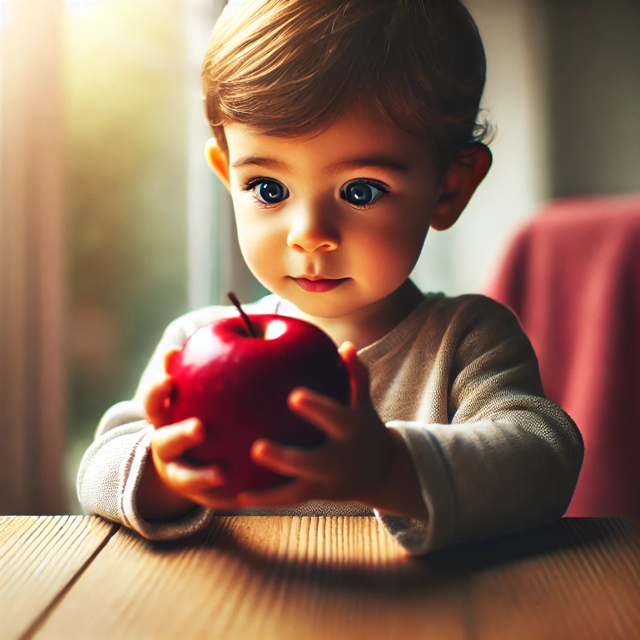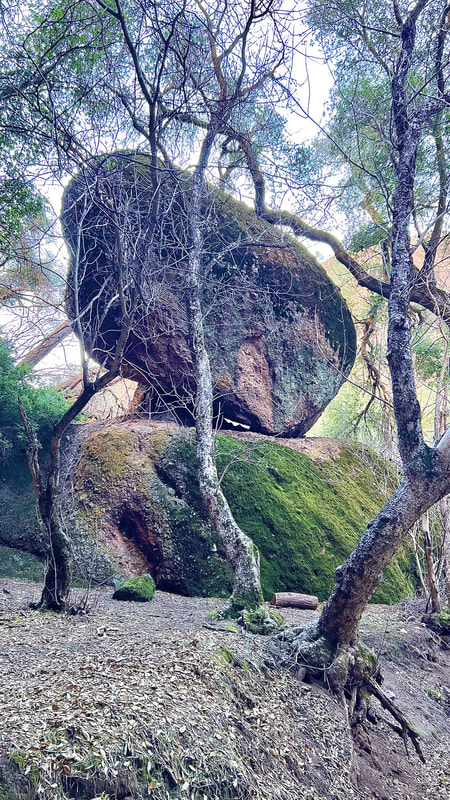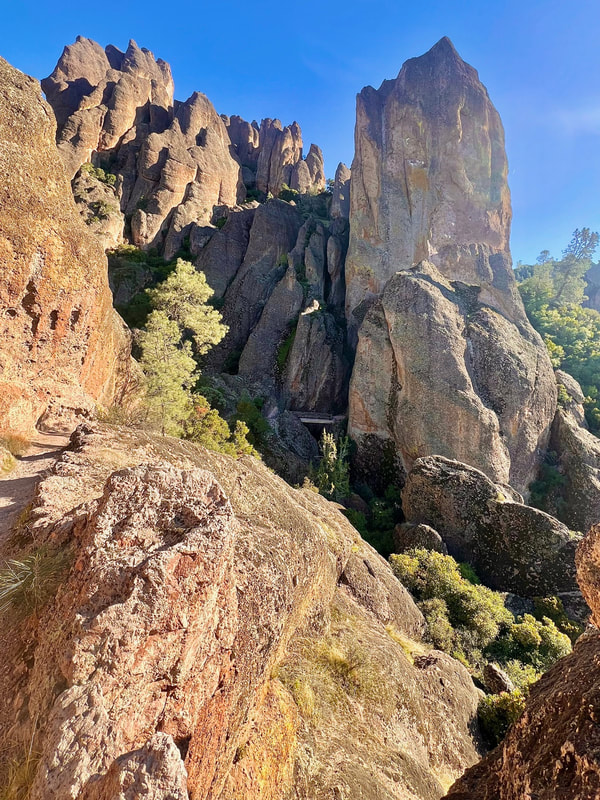|
A great teacher doesn’t need to explain what they know. They teach by their presence-by simply being. Likewise, a great student doesn’t depend on a teacher’s words to learn. Instead, they observe in silence and recognize the lessons hidden in everything. Take an apple, for example. To an ordinary student, it might be just fruit. But to a great student, the apple is a profound teacher. It shows patience in how it ripens, simplicity in the joy it offers, and abundance in the seeds it carries. Inside this single apple are the seeds to produce the next apple trees and potentially thousands more apples just like it. It’s a reminder that growth and possibility are always present, even in something seemingly small. The apple also reminds us of the deep interconnection we share with nature. It serves humans by providing nourishment, animals by feeding and sustaining them, and even insects through pollination. This cycle of giving and receiving reflects the interconnectedness of all life. The apple teaches us how each part of creation serves and supports the greater whole, offering abundance not just for itself but for all. In short, a great teacher doesn’t have to teach, and a great student doesn’t have to be taught. The difference lies in awareness. A great student recognizes that every moment, every person, and every object is a potential teacher. Their awareness turns the world into a classroom. Thus, the saying goes, “When the student is ready, the teacher will appear. When the student is truly ready, the teacher will disappear.” This happens not because of the teacher, but because of the student’s own awareness of the lessons they recognize for themselves. Ultimately, a great student becomes their own teacher. They no longer need external guidance because their heightened awareness allows them to learn from life itself.
0 Comments
Have you ever wondered how something as solid as a table or a rock can be made up of tiny particles and energy? Science tells us that what we perceive as solid is far from what it seems—and some theories even suggest our reality might be like a hologram. Let’s explore this fascinating idea in simple terms and touch on one of the most famous experiments that shakes up how we view reality: the double-slit experiment and quantum entanglement. Why Does Everything Feel Solid? Here’s the mind-blowing truth: everything in the universe is made of atoms, and atoms are about 99.999999% empty space! If they’re mostly empty space, why do things feel solid? It’s all about forces and energy: • Atoms are surrounded by electrons, tiny negatively charged particles. When two objects come into “contact,” their electrons repel each other because like charges repel. This creates an invisible force that keeps things from passing through each other. Imagine trying to push the negative ends of two magnests together-they resisit each other, creating an invisible force. The same thing happens at the atomic level when you touch an object! • What we perceive as “solidness” is really the sensation of this electromagnetic repulsion. So, solidity is an illusion created by energy interactions at the atomic level. Why Do Some Things Feel More Solid Than Others? Not everything feels equally solid because: 1. Density: Some materials, like metal, have atoms packed tightly together, creating more resistance when you touch them. Less dense materials, like foam, have more empty space between atoms, making them feel softer. 2. Bonds: Strong atomic bonds, like those in diamonds, make objects feel harder, while weaker bonds, like in rubber, allow objects to bend and feel less rigid. The Double-Slit Experiment: Does Reality Depend on Observation? Now let’s dive into an experiment that challenges how we understand reality: the double-slit experiment. 1. The Setup: • Imagine firing tiny particles (like electrons or photons) at a wall with two slits. • If no one observes them, these particles behave like waves, creating an interference pattern on the wall behind the slits. This pattern suggests that the particles travel through both slits simultaneously as a wave. 2. The Twist: • When scientists observe which slit the particle goes through, the interference pattern disappears. Instead, the particles behave like tiny objects, going through one slit or the other. 3. The Implication: This experiment suggests that the act of observation changes the behavior of particles. Reality at the quantum level doesn’t “solidify” into one outcome until it is observed. In other words, our perception plays a role in shaping reality itself! Quantum Entanglement: Everything Is Connected Now, let’s take it a step further with quantum entanglement. When two particles become “entangled,” their states are linked, no matter how far apart they are. If you measure one particle, the other instantly “knows” and adjusts its state accordingly—even if they’re light-years apart! Here’s what makes this fascinating: • This connection happens faster than the speed of light, defying our understanding of space and time. • It suggests that the universe is deeply interconnected at a fundamental level. In a way, quantum entanglement shows that distance is an illusion. Everything is part of the same unified energy field, and what happens to one part of the universe can influence another, no matter how far apart they seem. Is Reality Like a Hologram? Here’s where things get even more interesting. Some scientists propose that our entire universe might function like a hologram: • A hologram is a 3D image created from patterns on a 2D surface. • The holographic principle suggests that all the information needed to create our 3D universe is encoded on a 2D “surface” at the edge of the universe. If this is true, what we experience as solid objects, space, and time might actually be a projection of something deeper—an interplay of energy and information. What Does This Mean for Us? 1. Reality Is Deeper Than It Seems: Quantum physics shows us that what we perceive as “solid” is really energy and forces interacting. At the deepest level, reality is more like a web of possibilities. 2. Interconnection: Quantum entanglement reveals that we are all connected in ways we can’t fully see or understand. The energy flowing through you is part of the same universe that connects everything else. 3. The Illusion of Solidity: The world feels solid and separate, but at its core, it’s all vibrating energy fields and interactions. Many spiritual traditions describe this as maya, or the illusion of the material world. The Big Picture Our perception of the world is shaped by how our senses interpret energy and forces. Science tells us that solidity is an illusion, particles behave differently when observed, and everything in the universe might be interconnected through quantum entanglement. These ideas blur the line between science and spirituality, inviting us to explore reality’s mysteries. So, the next time you touch something “solid,” take a moment to reflect: you’re not just interacting with matter—you’re engaging with the energetic forces and connections that make up the universe. What do you think? Could the reality you experience be shaped by something far more mysterious than you’ve imagined? What if God experiences life through us, and through our ability to love and forgive, we experience God? This profound idea redefines compassion, empathy, and forgiveness as not just moral virtues but spiritual practices that bring us closer to the divine. By embodying these qualities, we dissolve the illusion of separateness and open ourselves to the truth of oneness. God’s Infinite Experience If God is infinite and all-encompassing, then every experience—joy, sorrow, love, and pain—flows through God. Imagine God not as a distant observer but as an intimate participant, feeling the world through our eyes, hearts, and actions. This perspective explains the boundless forgiveness and compassion often attributed to God. How could a being that experiences life through all of us condemn? Judgment fades in the presence of deep understanding, and divine compassion becomes the natural response to human imperfection. Compassion: The Gateway to Oneness Compassion, empathy, and forgiveness are often seen as acts of kindness toward others, but they are also pathways to divine connection. When we forgive someone, we see beyond their actions and connect with their humanity. When we empathize, we transcend the boundaries of self and other, recognizing that their pain is not separate from our own. In these moments, we step into the divine flow of oneness. We aren’t just connecting with another person; we’re aligning with the essence of God. Experiencing God Through Action Many seek to understand God through prayer, meditation, or scripture. While these practices are invaluable, there’s another, often overlooked way to experience the divine: by embodying God-like qualities. • Compassion: When we offer compassion to others, we act as vessels of divine love. We create a space where others feel seen, understood, and accepted—just as God does for us. • Forgiveness: Forgiveness isn’t about excusing harm but about freeing ourselves from the chains of resentment. In forgiving, we reflect God’s infinite capacity for understanding. • Empathy: When we feel another’s pain as our own, we dissolve the illusion of separateness and touch the truth of our interconnectedness. By embodying these qualities, we don’t just know God; we experience God within and through us. Barriers to Divine Connection If compassion and forgiveness bring us closer to God, then what happens when we act without them? Judgment, anger, and resentment create a sense of separation—not just between ourselves and others but also between ourselves and the divine. These barriers are illusions, but they feel real because they’re rooted in the ego’s desire to protect its identity. The antidote is simple yet profound: practice compassion, even when it feels difficult. Forgive, even when it feels undeserved. In doing so, we don’t just heal relationships; we also heal the separation within ourselves and reconnect with God’s presence. Living as the Divine To live compassionately is to embody the essence of God. When we approach the world with love, empathy, and forgiveness, we become reflections of the divine. And in those moments, we don’t just sense God—we become one with God. So, the next time you feel compassion for someone, realize that you’re not just being kind; you’re touching the infinite. And when you forgive, remember that you’re stepping into the boundless love that flows through all of creation. By aligning with these divine qualities, we move closer to the truth of oneness—where God is not something we reach for, but something we are. A Call to Action Take a moment today to reflect: where in your life can you offer more compassion or forgiveness? Perhaps it’s toward a loved one, a stranger, or even yourself. Try to embody that divine quality and notice the shift it creates—not just in the world around you, but in your own heart. If this message resonates with you, I’d love to hear your thoughts or experiences. How have you experienced compassion as a spiritual practice? Let’s continue this conversation about oneness and divine connection in the comments below. “Until you make the unconscious conscious, it will direct your life and you will call it fate.” — Carl Jung "Pain is certain, suffering is optional." - The Buddha “What you are aware of, you are in control of; what you are not aware of is in control of you.” — Anthony De Mello Most people go through life unaware that they are suffering. They accept their struggles, frustrations, and negative emotions as “normal,” believing they are just part of life. But what if I told you suffering isn’t your natural state? What if you could break free, not by avoiding pain but by understanding it? Suffering is a state. Whether it’s a state of mind or being, it’s not permanent. Like any state, it can be changed—but only if you become aware of it first. The truth is, what we are aware of, we can control. What we are not aware of controls us. And for many of us, suffering has silently taken control, shaping our thoughts, actions, and relationships without our knowing it. Common Forms of Hidden Suffering Suffering isn’t always obvious. Sometimes it manifests as anger, jealousy, or self-doubt. Other times, it hides behind habits, expectations, or feelings of inadequacy. Here are some examples of hidden suffering: • Feeling uneasy when others succeed (comparison) • Holding grudges or clinging to the past (attachment) • Constantly worrying about the future (fear) • Struggling with self-worth (insecurity or failure) • Numbing yourself with distractions like alcohol, drugs, or excessive fun (escape) Even subtle feelings, like frustration when stuck in traffic or envy when a friend gets a new car, can point to deeper unresolved suffering. Why Awareness Matters The first step to overcoming suffering is awareness. When you recognize that you are suffering, you naturally start seeking understanding and solutions. In today’s world, there is no shortage of information or resources to help—what’s missing is awareness. Awareness allows you to pause and reflect before reacting. It gives you the power to ask yourself, “Why am I feeling this way? What’s really behind this emotion?” With awareness, you take back control from the invisible forces shaping your life. The Ripple Effect of Suffering Your suffering doesn’t just affect you—it impacts everyone around you. A single moment of anger, fear, or jealousy can ripple out and influence others in ways you may not even realize. When you heal yourself, you also heal the world around you. Imagine how different history might have been if individuals like Hitler had encountered compassion or healing in their formative years. Every action we take, every word we speak, has the potential to either spread suffering or alleviate it. This isn’t about guilt—it’s about responsibility. Once you’re aware of your suffering, you have the opportunity to act consciously and make better choices for yourself and others. Suffering Is a Teacher Suffering is not inherently bad. It becomes destructive only when it is prolonged and unaddressed. From a spiritual perspective, suffering can teach us life’s most valuable lessons—if we are willing to learn. It’s not the pain itself that holds the lesson but how we respond to it. Do we numb it with distractions, or do we face it and seek to understand it? The sooner you acknowledge and learn from your suffering, the sooner you can free yourself from it. A Path Toward Peace Suffering is not your destiny. It’s a state, not a life sentence. The first step toward freedom is awareness. Start noticing your (FEARtw) feelings, emotions, actions, reactions, thoughts, and words. Observe how they influence your decisions and relationships. When you are aware of your suffering, you are already on the path to understanding and healing. You are no longer a slave to unconscious patterns—you are free to create a better life for yourself and those around you. The choice is yours: continue living in a state of suffering, or awaken to the possibility of peace, joy, and love. Awareness is the key that unlocks the door. Remember: Awareness is the beginning of transformation. |
AuthorFeelasoulphy Categories
All
Archives
May 2025
|




 RSS Feed
RSS Feed